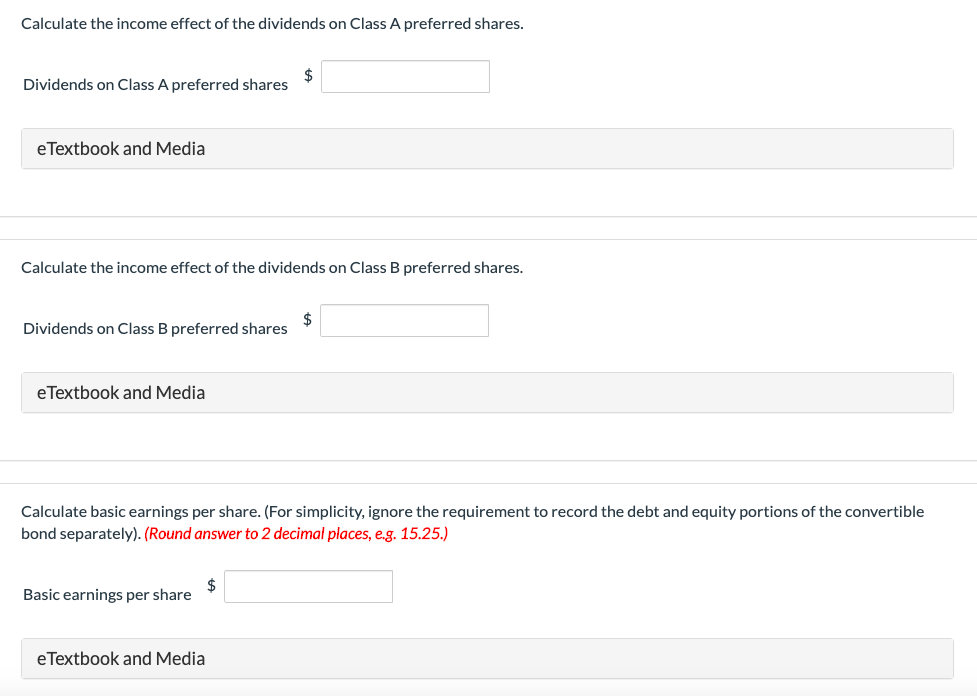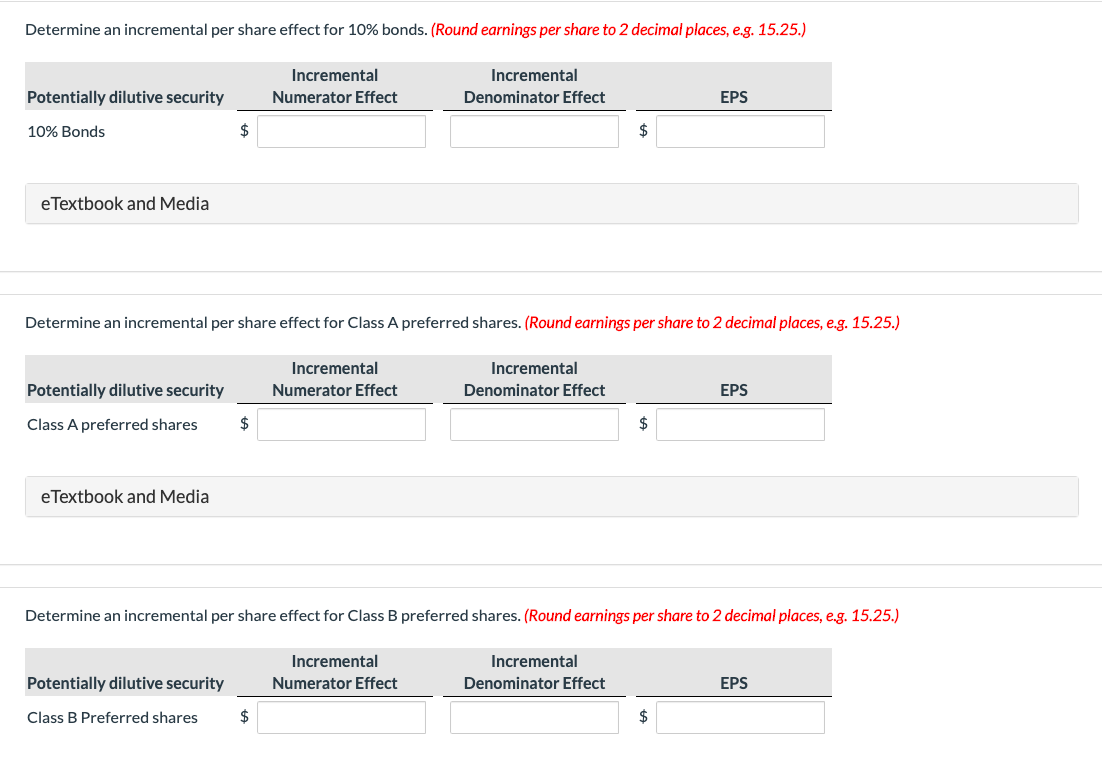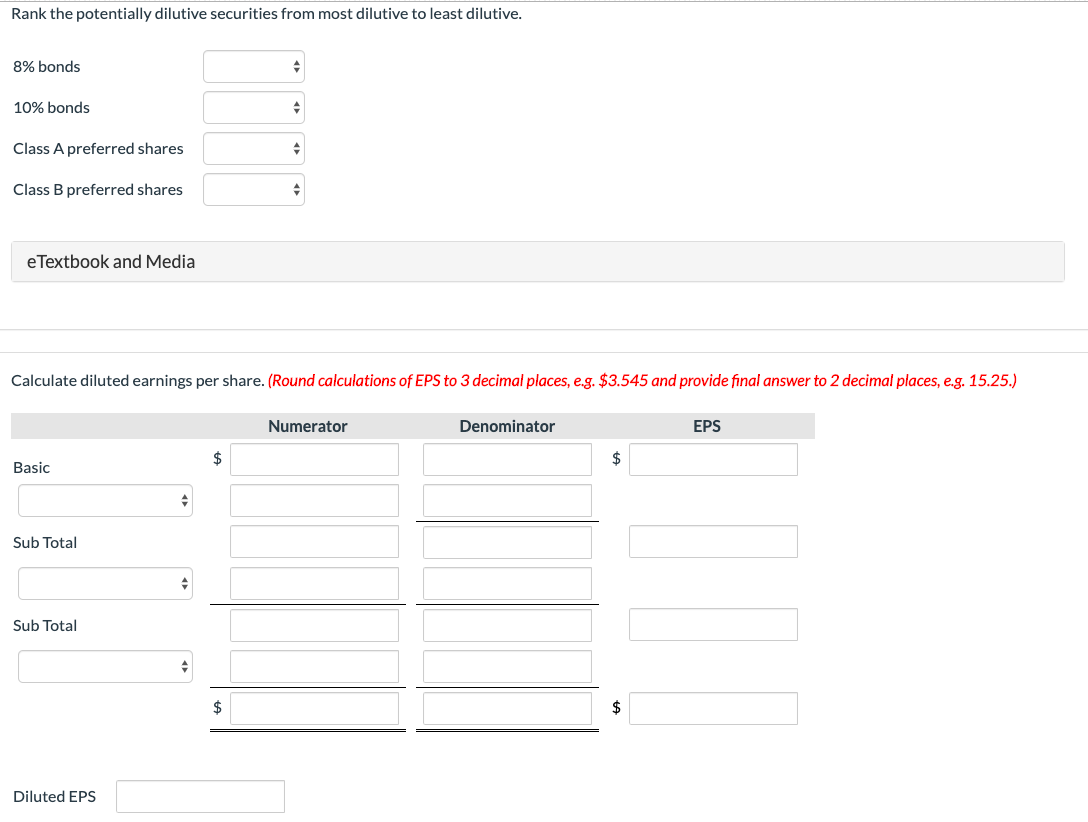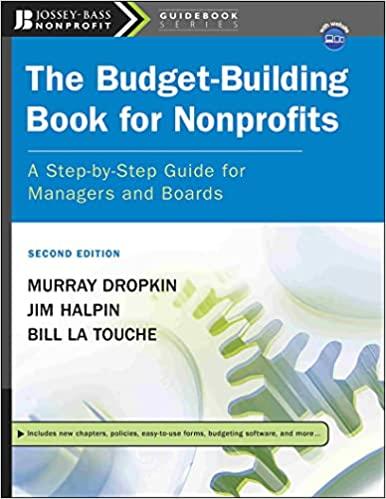




Nash Corporation had a net income for the current year ending December 31, 2021 of $1,204,500. Throughout 2021 the following items were outstanding: 413,000 common shares 18,500 Class A $3 cumulative preferred shares that were convertible to common shares at a rate of 1:1 49,500 Class B $4 non-cumulative preferred shares that were convertible at a rate of one common share for every two preferred shares. $551,000,8% bonds that were convertible to 14,500 common shares $303,000, 10% bonds convertible to 11,000 common shares No dividends were declared or paid in 2021. Nash's tax rate is 25%. Calculate the income effect of the dividends on Class A preferred shares. Dividends on Class A preferred shares e Textbook and Media Calculate the income effect of the dividends on Class B preferred shares. Dividends on Class B preferred shares e Textbook and Media Calculate basic earnings per share. (For simplicity, ignore the requirement to record the debt and equity portions of the convertible bond separately). (Round answer to 2 decimal places, e.g. 15.25.) Basic earnings per share e Textbook and Media Calculate the after-tax interest paid on the 8% bonds. After-tax interest on 8% bonds converted e Textbook and Media Determine an incremental per share effect for 8% bonds. (Round earnings per share to 2 decimal places, e.g. 15.25.) Incremental Numerator Effect Incremental Denominator Effect Potentially dilutive security EPS 8% Bonds e Textbook and Media Calculate the after-tax interest paid on the 10% bonds. After-tax interest on 10% bonds converted e Textbook and Media Determine an incremental per share effect for 10% bonds. (Round earnings per share to 2 decimal places, e.g. 15.25.) Incremental Numerator Effect Incremental Denominator Effect Potentially dilutive security EPS 10% Bonds e Textbook and Media Determine an incremental per share effect for Class A preferred shares. (Round earnings per share to 2 decimal places, e.g. 15.25.) Incremental Numerator Effect Incremental Denominator Effect EPS Potentially dilutive security Class A preferred shares eTextbook and Media Determine an incremental per share effect for Class B preferred shares. (Round earnings per share to 2 decimal places, e.g. 15.25.) Incremental Potentially dilutive security Incremental Denominator Effect EPS Class B Preferred shares Rank the potentially dilutive securities from most dilutive to least dilutive. 8% bonds 10% bonds Class A preferred shares Class B preferred shares e Textbook and Media Calculate diluted earnings per share. (Round calculations of EPS to 3 decimal places, e.g. $3.545 and provide final answer to 2 decimal places, e.g. 15.25.) Numerator Denominator EPS Basic Sub Total Sub Total Diluted EPS











